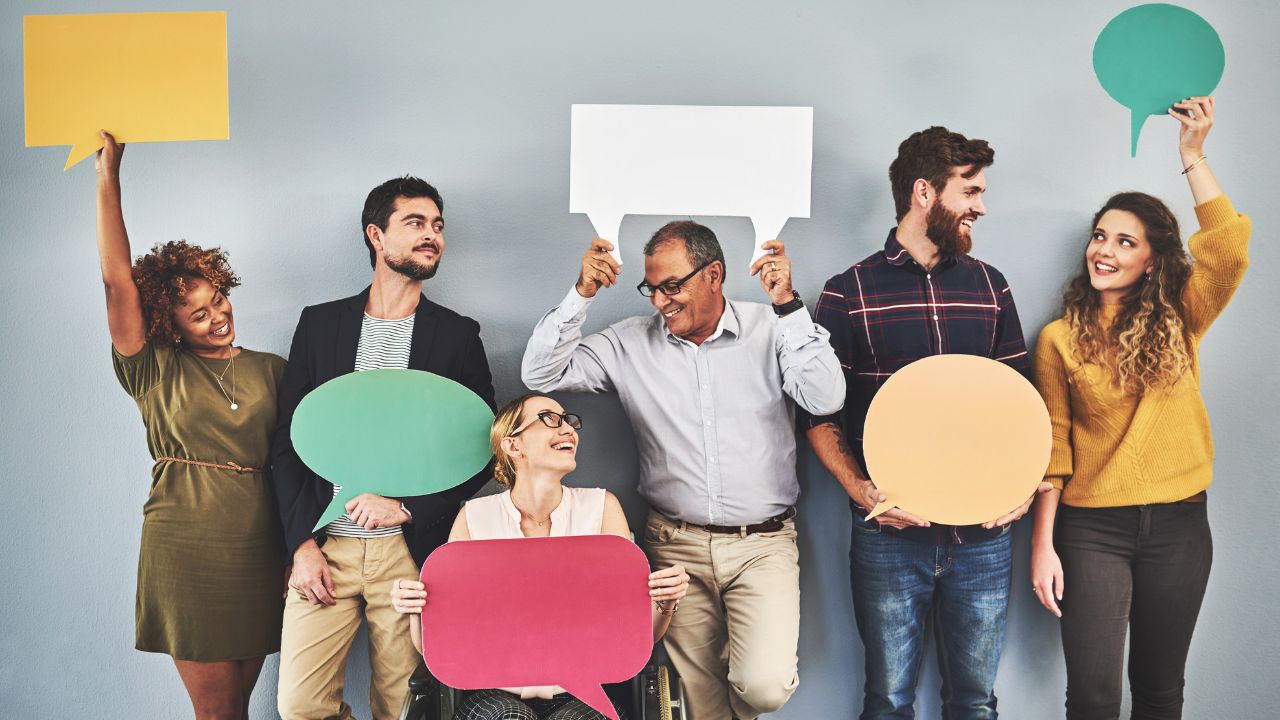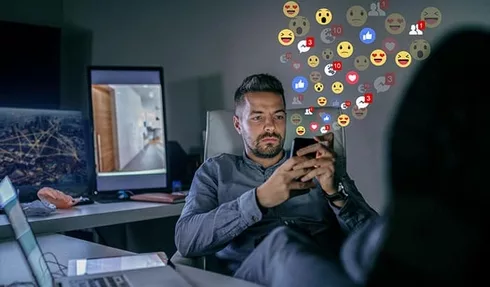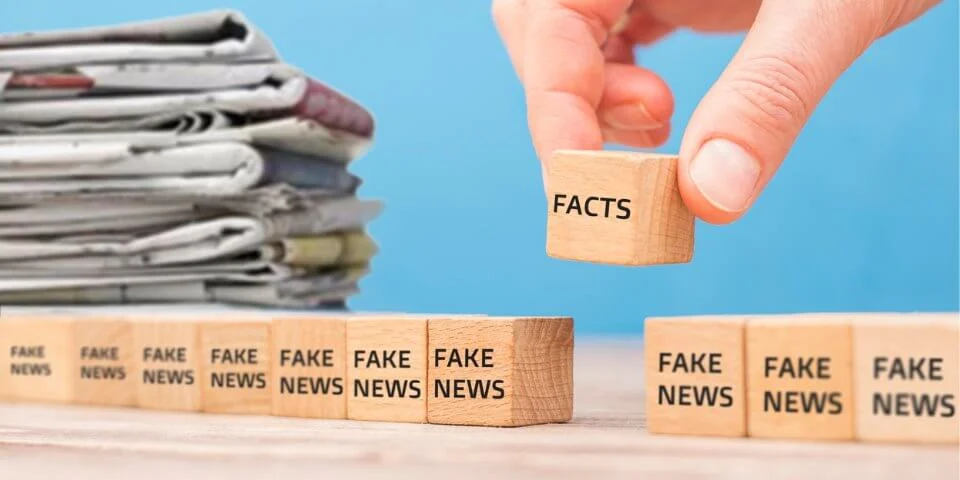How Social Media Shapes Public Opinion On Breaking News - From Tweets To Truth
Breaking news or broken truth? See how social media shapes public opinion and spreads information and misinformation in real-time.
Apr 01, 20252.2K Shares40.9K Views

Social media has transformed how people consume and respond to breaking news. Platforms like Twitter, Facebook, and TikTok provide instant updates, allowing news to spread globally within seconds. This rapid dissemination of information has changed public discourse, influencing opinions and shaping narratives on major events.
However, the speed of social media comes with challenges. Misinformation, biased algorithms, and echo chambers often shape how people perceive news, leading to polarized opinions.
This article examines how social media influences public opinion on breaking news, the risks associated with digital news consumption, and what the future holds for journalism in the social media era.
The Rise Of Social Media As A News Source
Traditional media outlets, such as television and newspapers, once held a monopoly on breaking news. Today, social media has taken over as the primary news source for millions. According to a 2024 Pew Research study, over 70% of adults in the U.S. consume news from social media platforms, with younger generations relying almost entirely on digital sources.
This shift is driven by accessibility, convenience, and real-time updates. Twitter, for example, has become the go-to platform for live news coverage, while Facebook and Instagram amplify viral news stories through shares and engagement. The rise of TikTok as a news source further highlights how users prefer short, engaging, and highly visual content over traditional reporting.
The Influence Of Algorithms On Public Opinion
Social media platforms rely on algorithms to determine what content appears on users' feeds. These algorithms prioritize engagement favoring posts with high likes, shares, and comments rather than accuracy or credibility.
How Algorithms Shape Public Opinion
- Sensationalism over facts:Content that triggers emotions (fear, outrage, excitement) tends to be promoted over neutral, fact-based reporting.
- Filter bubbles:Users are shown content that aligns with their existing beliefs, reinforcing biases.
- Trending topics influence perception:When a particular narrative dominates a platform’s trending section, it creates the illusion of consensus, even if the information is misleading.
For example, Facebook’s algorithm played a significant role in spreading misinformation during the 2016 U.S. elections, leading to significant political polarization.
Algorithms And Echo Chambers
Social media algorithms curate content based on user preferences and interactions, creating echo chambers where individuals are primarily exposed to viewpoints that align with their existing beliefs. This reinforcement of biases can skew public perception of breaking news events and deepen societal divisions.
Effects include:
- Political Polarization:Users are often exposed to content that confirms their political leanings while excluding opposing perspectives.
- Reduced Diversity:Limited exposure to diverse viewpoints hinders critical thinking and balanced opinions.
Ways Social Media Shapes Public Opinion
1. Speed And Accessibility
Social media platforms provide instant access to breaking news, enabling users to stay informed about global events as they unfold. Unlike traditional media outlets that require editorial processes, social media allows anyone from journalists to eyewitnesses to share updates in real-time.
Key advantages include:
- Faster awareness:Events such as natural disasters, terrorist attacks, and political unrest are reported within seconds.
- Citizen journalism:Eyewitnesses post videos and images before news outlets arrive on the scene.
- Live reporting:Journalists and activists use platforms like Twitter Spaces or Facebook Live to provide updates directly.
- Accessibility:Information reaches global audiences without barriers like subscription fees or geographic restrictions.
However, this speed often comes at a cost. Inaccurate information can go viral before it is verified, leading to widespread misinformation. For example, during the 2021 Capitol riots, false reports circulated on social media, fueling confusion and panic.
2. User-Generated Content
Social media empowers individuals to contribute to breaking news coverage through photos, videos, and firsthand accounts. This democratization of news creation provides unique perspectives but can also amplify inaccuracies or biased reporting.
Examples include:
- Viral videos capturing pivotal moments during protests or natural disasters.
- Citizen journalism offers raw, unfiltered accounts of events missed by traditional outlets.
While user-generated content enriches the news landscape, it requires careful verification to ensure credibility.
3. Emotional Framing
Social media headlines and posts often prioritize sensationalism to evoke strong emotional responses of fear, anger, or hope, which can influence public sentiment disproportionately. Emotional framing can polarize opinions on contentious issues like elections or public health crises.
For example:
- Posts emphasizing fear during crises may lead to panic-driven reactions.
- Hopeful narratives can inspire collective action but may oversimplify complex issues.
4. The Rise Of Viral Trends And Hashtags
Hashtags like #MeToo, #BlackLivesMatter, and #ClimateAction have played a huge role in shaping public discourse. Social media trends can bring attention to social and political issues, mobilizing millions of users to support causes, sign petitions, or join protests. However, viral movements can sometimes lead to performative activism, where people engage without taking meaningful action.
5. Misinformation And Fake News
False information spreads faster on social media than verified news. Sensational headlines, manipulated images, and deepfake videos contribute to misleading narratives that can influence public opinion on critical issues like elections, public health, and global conflicts. Fact-checking and digital literacy are essential to combat misinformation.
6. The Power Of Influencers And Digital Activists
Social media influencers have significant power in shaping opinions. Celebrities, politicians, and activists use platforms to promote messages, endorse products, or advocate for causes. Their large followings can amplify discussions, sway political opinions, and even impact government decisions.
7. Echo Chambers And Confirmation Bias
Social media users often engage with like-minded individuals, reinforcing their existing beliefs. This creates echo chambers, where opposing viewpoints are rarely encountered. Confirmation bias strengthens personal opinions, making it harder for people to accept different perspectives or engage in meaningful debates.
8. Political Campaigns And Propaganda
Governments, political parties, and interest groups use social media to influence public opinion. Targeted ads, propaganda campaigns, and misinformation strategies are used to sway voters and control narratives. The 2016 U.S. elections and Brexit campaign are examples of how social media played a crucial role in shaping political outcomes.
9. The Decline Of Traditional Journalism
As more people rely on social media for news, traditional journalism has faced challenges. The demand for instant news updates often leads journalists to report on viral stories before verifying facts. This shift in journalism practices has affected trust in media and increased competition for attention.
10. The Globalization Of Public Discourse
Social media connects people across borders, making global conversations possible. Movements like #FreePalestine, #SaveTheAmazon, and #StopAsianHate gain international support due to the cross-border influence of digital platforms. While this fosters awareness, it can also lead to misinterpretation of cultural and political contexts.
Case Studies
1. The Arab Spring (2010-2012)
During the Arab Spring (2010-2012), social media played a critical role in organizing protests and exposing government corruption. Platforms like Facebook and Twitter allowed activists to mobilize, bypass state-controlled media, and share real-time updates. While the movement led to the fall of regimes in Tunisia and Egypt, governments in Syria and Libya responded with violent crackdowns, showing both the power and risks of digital activism.
2. #MeToo Movement (2017-Present)
The #MeToo movement gained global traction in 2017, amplifying personal stories of sexual harassment. Millions shared their experiences on social media, holding powerful figures accountable and pushing for workplace reforms. While it raised awareness and led to policy changes, the movement also sparked debates about trial-by-social-media and the need for due process.
3. COVID-19 Misinformation Crisis (2020-2022)
During the COVID-19 pandemic, social media became both a critical source of health information and a hub for misinformation. While experts used platforms to share safety guidelines, conspiracy theories about vaccines and treatments spread rapidly, fueling distrust in health authorities. Efforts to combat misinformation through fact-checking and content moderation were met with resistance, highlighting the challenges of balancing free speech with public safety.
4. 2020 U.S. Presidential Election & Misinformation
Social media played a key role in the 2020 U.S. presidential election, helping candidates connect with voters but also amplifying misinformation. False claims of election fraud led to widespread distrust in democratic processes, culminating in the January 6 Capitol attack. Foreign interference campaigns further deepened divisions, demonstrating how social media can be weaponized for political manipulation.
5. Russia-Ukraine War & Digital Warfare (2022-Present)
The Russia-Ukraine war has shown how social media can be used for both transparency and propaganda. Ukrainian officials leveraged digital platforms to rally international support, while Russian state media spread disinformation to justify the invasion. Independent citizen journalists provided real-time updates, challenging official narratives, but the rapid spread of unverified content also contributed to information fatigue.
How To Spot Fake News
1. Check The Source
One of the easiest ways to detect fake news is by verifying the source. Reputable news organizations follow strict editorial standards, while unreliable sources may lack credibility. If an article comes from an unfamiliar website, check its “About” section, editorial policies, and previous articles. To counter misinformation, platforms, and individuals can use Chatgpt detectorto validate AI-generated news content
2. Analyze The Headline
Sensationalist headlines often indicate fake news. If a title seems exaggerated, shocking, or emotionally charged, it’s important to read beyond the headline before concluding. Misinformation often relies on clickbait tactics to attract readers, spreading falsehoods without substantial evidence.
3. Look For Supporting Evidence
Reliable news articles cite credible sources such as official statements, expert opinions, and verified data. Fake news, on the other hand, often lacks citations or references to unreliable sources. If a claim appears controversial or unlikely, search for other reputable publications reporting on the same topic. If no other credible sources confirm the story, it’s likely false.
4. Verify The Author
Checking the author’s credentials can help determine the credibility of a news piece. Reputable journalists and writers have verifiable backgrounds, often linked to established media outlets. Fake news articles may be written by anonymous authors or individuals without professional expertise in journalism or the topic at hand.
5. Examine The Publication Date
Outdated news stories are sometimes reshared as if they are current, misleading readers into believing they are recent developments. Checking the publication date can prevent confusion and ensure that the information is still relevant. Some fake news stories also manipulate dates to make false claims appear more credible.
6. Look Out For Bias And Emotional Appeals
Fake news often plays on emotions such as fear, anger, or outrage to provoke reactions. If an article appears heavily biased or designed to manipulate emotions rather than provide objective information, it should be approached with skepticism. Analyzing the tone and language used can help differentiate between factual reporting and opinion-based propaganda.
7. Cross-Check With Fact-Checking Websites
Fact-checking organizations such as Snopes, PolitiFact, and FactCheck.org specialize in debunking misinformation. If a story seems suspicious, checking these sources can confirm its authenticity. Many social media platforms also provide fact-checking tools to help users verify the credibility of shared content.
8. Beware Of Manipulated Images And Videos
Fake news often includes doctored images or misleading video clips taken out of context. Reverse image searches using tools like Google Images or TinEye can help determine the original source of a photo. Analyzing videos for inconsistencies in lighting, shadows, or voice synchronization can also reveal signs of manipulation.
9. Watch For Unusual URLs And Website Design
Many fake news websites use domains that closely resemble legitimate news sites but contain subtle differences, such as extra letters or unusual suffixes. Poorly designed websites with excessive ads, spelling errors, and broken links are often signs of unreliable sources. Always ensure that the URL matches the official website of a known news organization.
10. Think Critically Before Sharing
Before sharing news on social media, take a moment to evaluate its accuracy. If a story seems too outrageous or aligns too perfectly with personal beliefs, it may be designed to mislead. Spreading false information contributes to misinformation, so always double-check facts before amplifying content.
People Also Ask
How Does Social Media Affect The Way We Think About Ourselves?
Social media can be harmful for teens' mental health. Comparing themselves to others can undermine self-esteem, and a teen's own carefully edited, perfect-looking feed can mask serious issues, making it harder for friends or parents or to see that they need help.
What Role Does Citizen Journalism Play In Breaking News?
Citizen journalism provides real-time updates from eyewitnesses but lacks the editorial standards of traditional journalism, increasing the risk of misinformation.
How Does Social Media Shape Our Views?
By constantly feeding us content that aligns with our existing views, social media limits exposure to alternative perspectives. This not only reinforces our biases but also leads us to believe that the world is more polarized than it is.
Can Social Media Help Combat Misinformation?
Yes, platforms have introduced fact-checking tools and flagged misleading posts to combat misinformation; however, these measures are often reactive rather than preventive.
Final Thoughts
Social media has transformed how we consume breaking news but has also introduced complexities in shaping public opinion. While it democratizes access to information and amplifies marginalized voices, it risks spreading misinformation and deepening societal divides through algorithms and sensationalist content.
By striking a balance between speed and accuracy, social media can continue to serve as a powerful tool for informing the public while minimizing its potential harms in shaping sentiment during pivotal moments in history.
Latest Articles
Popular Articles


